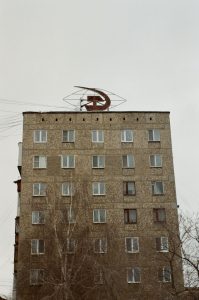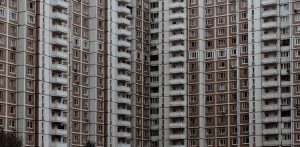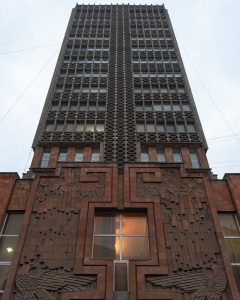The architecture of the USSR was strongly connected to the political and cultural context of the country. It reflected the concept of socialist realism, which set the task of forming the image of the new regime in the country through the creation of a new image of the city and the architectural landscape of the country.
The main features of the architecture of the USSR can be identified as follows:
- Massiveness and grandeur: Socialist builders set themselves the task of creating buildings that were not only functional but also impressive. The first socialist buildings of the USSR, such as the Palace of Soviets in Moscow, were created in a grandiose style.
- Classicism: Soviet architecture was a continuation of the traditions of Western European architecture, which was manifested in the use of classical forms, such as columns, pediments, porticos, etc.
- Practicality and functionality: in the USSR, buildings were built that were primarily functional. This was evident in the fact that the architecture of the USSR was always subordinated to the needs of people and society.
Some famous examples of USSR architecture: Moscow University, Stalin’s skyscrapers, VDNKh pavilions.
Moscow State University
Lomonosov Moscow State University (MSU) is one of the oldest and most famous universities in Russia, as well as one of the most famous landmarks of Moscow. The main building of MSU, located on Vorobyovy Gory, was built in the early 1950s and is famous for its high bell hall and a huge ceiling canvas painted by the artist M.V. Nesterov.
The building itself is designed in the neo-Renaissance style, with elements of classicism, and is an imposing structure more than 200 meters high, consisting of 32 floors. The interior of the building is filled with classical details such as cornices, columns and domes, which create a magnificent architectural impression.
Currently, MSU houses various academic and scientific faculties, research centers, libraries, museums and other educational institutions. The university building is often used to organize cultural events and is a popular tourist destination, attracting many lovers of architecture and culture.
Stalin’s skyscrapers
Stalin’s skyscrapers are a group of high-rise buildings built in Moscow between 1947 and 1957 under the direction of Joseph Stalin. These buildings were a symbol of the prosperity of the USSR and became the pride of Soviet architecture.
A total of six such buildings were built, which were called the “seven sisters”. These buildings are located in different areas of the city, but they have common stylistic features. Each building consists of 9-24 floors and is over 100 meters high. The buildings housed residential and commercial premises, and various organizations and institutions worked here.
Stalin’s skyscrapers were the embodiment of a new architectural style called Stalinist neoclassicism. They demonstrated the grandeur and power of the state and called on the population to work together and be patriotic. Rich decorative elements such as columns, cornices, diamond-shaped windows, gilded pylons, etc. were applied to the buildings.
Stalin’s skyscrapers, including the Moscow State University building, are iconic and the most recognizable symbols of Moscow. They remain popular with tourists and visitors to the city, and are also used as special objects at various events and celebrations.
Sverdlovsk (now Yekaterinburg) (Unsplash License)
Unknown city of the USSR (Unsplash License)
Unknown city of the USSR (Unsplash License)
Unknown city of the USSR (Unsplash License)
Unknown city of the USSR (Unsplash License)







